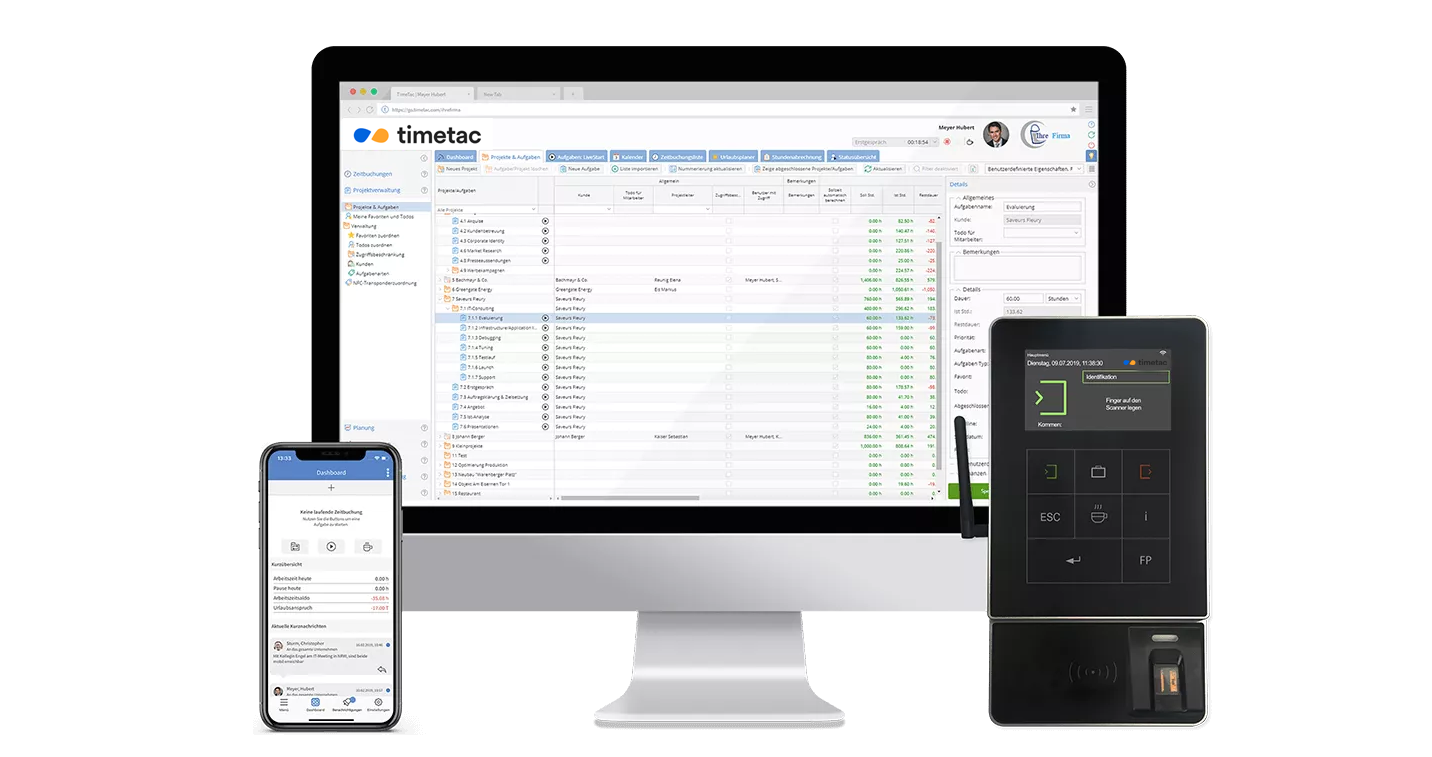Job Sharing: One Full-Time Job Divided into Two
by Gabriele Kaier, 12.05.2017
Job sharing means, one job splitted into two. It is an alternative form of flexible working. It offers employers as well as employees a range of benefits and could be an option that provides full-time positions through part-time work. Find out what job sharing can offer to your employees and company and how to implement job sharing successfully.

Job Sharing – A Definition
Part-time positions provide a better work-life balance, yet there are a number of disadvantages. Highly-qualified people are limited to positions with little prestige. Given the high percentage of women in part-time jobs, this could lead to new forms of discrimination between men and women in the workplace. On the other side, it offers employers as well as employees numerous advantages and could be an option that provides full-time positions through part-time work. Find out what job sharing provides to those who are involved and how to implement job sharing the best.
What Is Job Sharing?
Two or more employees are sharing a full-time position with interdependent tasks and joint responsibility. They have common ambitions and work closely together. Working time and tasks are scheduled among themselves.
The term “topsharing” means job sharing in positions with a high level of responsibility, which can include managerial tasks.
According to a study by the American Society for Human Resource Management, nearly 20% of U.S. companies allow job sharing today.
In UK only 8.43 million people work part time. It’s a practice that is still uncommon in the UK. In 2015, the Timewise Foundation found out that 46% of those employed in the UK want to work flexibly but are competing over very few vacancies. Only 8.7% of job vacancies with flexible working options that pay over £20,000 are advertised and out of these, 56.5% were part-time roles, and only 3.2% were job shares.
What Can Job Sharing Offer to You?
Job sharing offers an alternative approach that can be particularly practical at the various phases of an individual’s working life.
Job sharing can offer companies the chance to reach a new target audience and attract great employees: Young employees, women, and men, who want to combine demanding projects with other life activities or senior employees who want to stay employed while cutting down their amount of workload.
Dividing a job position also has advantages for society, i.e return on education.
Two employees can achieve more than one alone. They work as a team in a close cooperation combining skills and knowledge. They bring different skills and views, maybe additional networks and can act in place of the other one, in case of unforeseen absence.
Advantages
For employees:
- Part-time employees get access to interesting fulltime-jobs
- They can better reconcile their professional lives and family obligations, education or other activities
- Working closely together as a team makes fun and provides greater expertise on demanding projects
- Reinforces effective decision-making and common responsibility
- Ensures coverage in the case of leave, illness or other unforeseen absence
- Better re-integration into the company
- Promotes intergenerational job sharing: upgrading of senior’s competences, young professionals are more easily integrated into the workforce
- Greater cumulative productivity and fewer absences: two employees with less workload are more productive than one full-time employee
- Effective decision-making through discussion between two employees
- More experience and skills thanks to two instead of one professionals
- Two professionals for the costs of one
- Continuous presence, means the job is covered full-time
- Commitment and in-depth sharing foster innovation
- Motivated and loyal employees: Stimulating work reduces employee turnover and risk of burnout
- Intergenerational job sharing maintains the know-how
- Offering a flexible work model conveys an attractive company image in the job market and meets changes in values for the younger generation
- The company benefits from the network of two professionals
- Job sharing works against skill shortage
Prerequisites for ensuring successful job sharing
The success of a job share depends on the commitment of the partners and their ability to work as a team. Job sharing is not for everyone, it doesn’t fit to individuals with a rather pronounced ego, to those who have difficulty in sharing information and authority, or others who feel that they are indispensable.
Collaboration between the two partners goes further than typical teamwork: results are evaluated jointly, and there has to be a greater level of involvement between the two individuals. The kind of interaction between the partners during the initial meetings is an important indication: If one of the partners is very dominant from the beginning, this kind of imbalance could be detrimental for the cooperation in the future.
Job sharing partners who are qualified for job sharing have the following common personal characteristics: flexibility, open-mindedness, generosity, critical thinking, the ability to regularly assess oneself critically, and the ability to manage conflicts constructively.
Different forms of job sharing
When job sharing, two employees are sharing one full-time job position. They schedule their work hours on their own. Any reasonable arrangement is possible if it meets the needs of the supervisor and the job sharers. In practice the following job-sharing options are common:Job splitting
One job is divided into independent roles and the workers are complementary.
Job pairing
In this case the jobs cannot be easily divided. The workers are interchangeable, and the employer can ask either employee to handle a task. There are two further categories of job pairing:- “Pure” job sharing: In this case a single employment contract between an employer and two workers is used. The job sharing partners are completely interchangeable in handling all projects and tasks.
- “Hybrid” job sharing: Two separate employment contracts between the employer and the workers are needed . Such a method involves the division of projects between the partners on an informal basis, and the other tasks remain interchangeable.
In both methods, the responsibility is shared between the partners.
Legal issues
Although job sharing is a form of part-time employment, it presents participants with unique considerations, not encountered by the part-time permanent employee. The legal consequences may differ depending on the model chosen and agreement between employer and employees.
The Fair Labor Standards Act (FLSA) in the U.S. does not address job sharing. Job sharing is a matter of agreement between an employer and an employee, or the employee’s representative.
According to the Civil Service for Employees there are no job sharing contracts as such. Job sharing contracts are part-time contracts: two individuals are engaged to perform parts of the same job. Each of the job sharing partners must be treated as an individual in respect of their contractual rights, responsibilities, obligations and conduct. Any agreed information relating to the specific job sharing arrangements will need to be included in the contract.
Testimonials
Find a number of job sharing success stories on the blog of tandemploy. TimeTac GmbH develops and distributes web-based and mobile time tracking systems. The scope of our products includes market-tested and optimally customizable solutions for employee time tracking, project time tracking, leave management and shift planning. Contact us to learn more about TimeTac products.
Manage New Work Models
With TimeTac, everyone keeps track – efficiently and simply.
Mehr Klarheit schaffen
Vereinbaren Sie jetzt ein Beratungsgespräch!TimeTac bietet ein einfaches nutzerfreundliches System.





